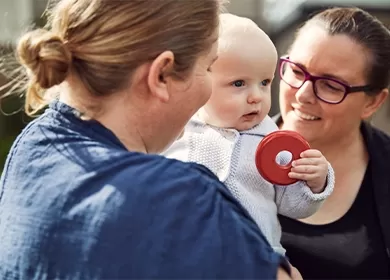Don’t have an account?
Select the donation type you’d like to make
Blimey! UK blood and plasma donors exceed expectations after ‘mad cow’ rule change
UK ex-pats and Aussies who spent time in the UK have made more than 123,000 blood and plasma donations in the 12 months since the ‘mad cow’ ban was lifted, exceeding expectations.
Australian Red Cross Lifeblood anticipated the rule change would lead to an additional 18,000 donors, but more than 34,000 new donors have rolled up their sleeves to give.
Lifeblood Executive Director of Donor Experience Cath Stone said the organisation was thrilled with the uptake in donation.
“These newly eligible donors are contributing nearly one in every 10 blood and plasma donations in Australia. However, the reality is that with demand at its highest in a decade, we still need more donors to boost supplies and there are still more than 800,000 people who may have become eligible because of this rule change.
“Right now, in particular, we need more people with O positive and O negative to book a donation.”
She said it was important to acknowledge the incredible effort of all those who had donated in the first 12 months and who were making a very real difference to patients in need every single day.
“After not being able to donate in Australia for over 20 years, it’s heartening to see these donors making up for lost time to help people who rely on blood and plasma donations,” Cath said.
“Incredibly, 95 dedicated donors have each given plasma, the powerful liquid part of blood, more than 20 times in the first year!”
Kirby Institute researcher Dr Skye McGregor said the UK restriction was the biggest reason people were permanently deferred from donating blood, impacting 4.4 per cent of the population.
“Australia’s first study into blood donation eligibility, conducted by the Kirby Institute and Lifeblood and published in Transfusion, shows around 10.5 million people are eligible to donate blood in Australia,” Dr McGregor said.
“Currently just 14.2 per cent of the eligible population are donating blood, which means there’s a huge number of people who could be donating but aren’t.
“The study also shows a high level of misperceptions around blood donation eligibility, including last year’s UK change, and we believe awareness may be the single biggest barrier to lifting donation rates.”
Lifeblood regularly reviews eligibility rules to ensure as many people as possible can give blood and plasma, without compromising safety, most recently reducing the wait period for blood donations from four months to seven days for people with tattoos.
Given rules do change, Cath said it’s likely many people simply don’t realise they are eligible to donate blood or plasma.
“I urge the community not to rule themselves out. Spread the word and encourage friends, colleagues and loved ones to check their eligibility and donate now if they can. After all, 1 in 3 Australians will need blood or blood products in their lifetime, so we should all think about paying it forward!”
To check your eligibility and book a donation, call 13 14 95, visit lifeblood.com.au or download the Lifeblood app.
Background The human variant Creutzfeldt-Jakob Disease (vCJD) or ‘mad cow’ ban impacted people who lived in England, Wales, Scotland, Northern Ireland, the Channel Islands, Isle of Man and the Falkland Islands for six months or more between 1980 and 1996. It was removed in July 2022 following an in-depth risk assessment, performed by Lifeblood and UNSW Sydney’s Kirby Institute. It found there would be no risk of acquiring human variant Creutzfeldt-Jakob Disease (vCJD) from blood donations and that Australia’s blood supply would remain one of the safest in the world.
Key statistics for UK donors in the first 12 months
- 34,389 donors have made 123,118 donations
- Contributed 8% of all blood and plasma donations
- 76% (or 26,200) returned for a second donation (the average new donor return rate is 60%)
- 95 people donated more than 20 times
| State/Territory | Number of UK donors in past 12 months | Number of blood and plasma collections |
|---|---|---|
| New South Wales | 9,285 | 30,390 |
| Victoria | 7,996 | 27,867 |
| Queensland | 6,842 | 23,832 |
| Western Australia | 6,027 | 23,712 |
| South Australia | 2,494 | 8,709 |
| ACT | 1,222 | 4,561 |
| Tasmania | 824 | 3,373 |
| Northern Territory | 204 | 674 |
| National (some donors donated across states): | 34,389 | 123,118 |




